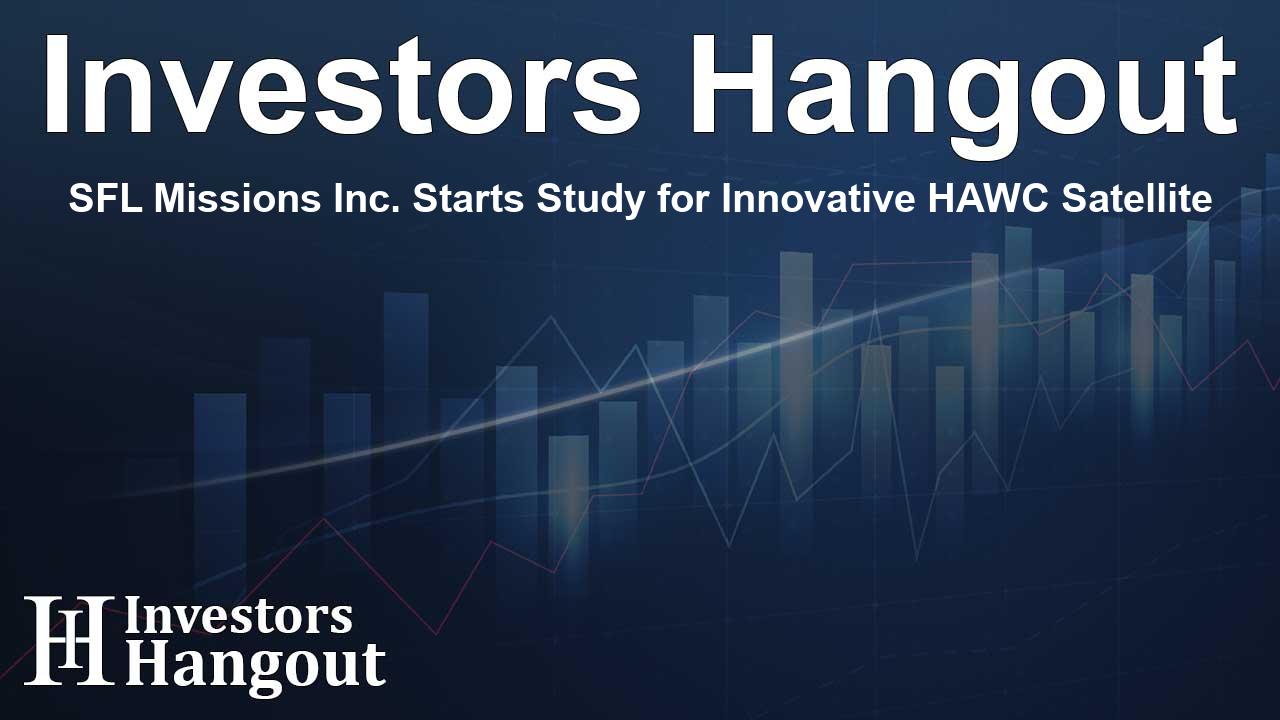SFL Missions Inc. Starts Study for Innovative HAWC Satellite

SFL Missions Inc. Awarded HAWC Satellite Conceptual Design Contract
SFL Missions Inc. has recently secured a contract from the Canadian Space Agency (CSA) to embark on an important conceptual design study for the High-Altitude Aerosols, Water vapour, and Clouds (HAWC) satellite mission. This mission represents Canada’s contribution to an ambitious NASA initiative aimed at understanding our atmosphere better.
Understanding the HAWC Mission
The HAWC satellite mission is not just a significant step for Canada, but for global atmospheric science. It aims to gather crucial atmospheric data which can greatly enhance predictions related to extreme weather events, climate modeling, and air quality monitoring. According to Michael Henderson, SFL Missions Inc.’s expert in Guidance, Navigation, and Control, this mission stands to make a profound impact.
Key Components of the HAWC Satellite
Under the Phase 0 contract, SFL Missions will delve into the detailed design specifications required for the HAWC satellite, termed HAWCsat, alongside studying the Aerosol Limb Imager (ALI) instrument that will be onboard. This critically important instrument will measure aerosols—tiny particles in the atmosphere that significantly influence weather, climate, and air quality. Aerosols originate from various sources, including natural phenomena like forest fires and volcanoes, as well as man-made emissions from industrial activities.
Complementary Instruments Enhancing Data Collection
Furthermore, HAWCsat will carry another pivotal instrument known as the Spatial Heterodyne Observations of Water (SHOW). This instrument’s role will be to quantify water vapor present in the upper layers of the atmosphere, an essential factor in the processes of cloud formation, which ultimately affect Earth’s thermal dynamics.
Collaboration with Other Canadian Instruments
The measurements gathered by ALI and SHOW will be synchronized with a third Canadian device called Thin Ice Clouds and Far InfraRed Emissions (TICFIRE). This instrument is set to be deployed on the NASA AOS satellite, which HAWCsat will strategically lead by 310 seconds during its mission.
Expertise That Sets SFL Missions Apart
SFL Missions stands out in its capability to manage formation flying of satellites. Their extensive experience with precise attitude control, accurate sensor pointing, and autonomous technologies specifically designed for smaller, low-mass satellites makes them uniquely qualified for this mission. The alignment of the HAWC spacecraft with the AOS satellite is crucial, ensuring that both can effectively capture simultaneous measurements of the atmosphere from different observational angles, as highlighted by Henderson.
Plan Completion and Future Prospects
The CSA’s Phase 0 study for the HAWC mission is anticipated to be completed by November this year, marking a key milestone in preparing for this ground-breaking satellite mission.
About SFL Missions Inc.
SFL Missions Inc. specializes in developing cost-effective satellite solutions. They focus on delivering high-performance small satellites that challenge the traditional cost and performance standards in the industry. Their innovative approach allows for efficient global launch arrangements and operation of a comprehensive mission control center that accesses ground stations worldwide. The company’s pioneering work is essential for the future of cost-effective satellite technology and supporting the proliferation of satellite constellations.
Frequently Asked Questions
What is the HAWC satellite mission?
The HAWC satellite mission aims to collect atmospheric data that supports extreme weather predictions and climate modeling.
Who awarded the contract for the HAWC mission?
The contract for the HAWC mission has been awarded by the Canadian Space Agency (CSA) to SFL Missions Inc.
What instruments will be on the HAWC satellite?
The HAWC satellite will carry the Aerosol Limb Imager (ALI) and the Spatial Heterodyne Observations of Water (SHOW) instruments.
When is the study for the HAWC mission expected to be completed?
The Phase 0 study for the HAWC mission is expected to be completed by November of this year.
What are the advantages of using small satellites like HAWCsat?
Small satellites provide greater flexibility, reduced costs, and the ability to perform specialized missions efficiently compared to larger counterparts.
About The Author
Contact Evelyn Baker privately here. Or send an email with ATTN: Evelyn Baker as the subject to contact@investorshangout.com.
About Investors Hangout
Investors Hangout is a leading online stock forum for financial discussion and learning, offering a wide range of free tools and resources. It draws in traders of all levels, who exchange market knowledge, investigate trading tactics, and keep an eye on industry developments in real time. Featuring financial articles, stock message boards, quotes, charts, company profiles, and live news updates. Through cooperative learning and a wealth of informational resources, it helps users from novices creating their first portfolios to experts honing their techniques. Join Investors Hangout today: https://investorshangout.com/
The content of this article is based on factual, publicly available information and does not represent legal, financial, or investment advice. Investors Hangout does not offer financial advice, and the author is not a licensed financial advisor. Consult a qualified advisor before making any financial or investment decisions based on this article. This article should not be considered advice to purchase, sell, or hold any securities or other investments. If any of the material provided here is inaccurate, please contact us for corrections.
